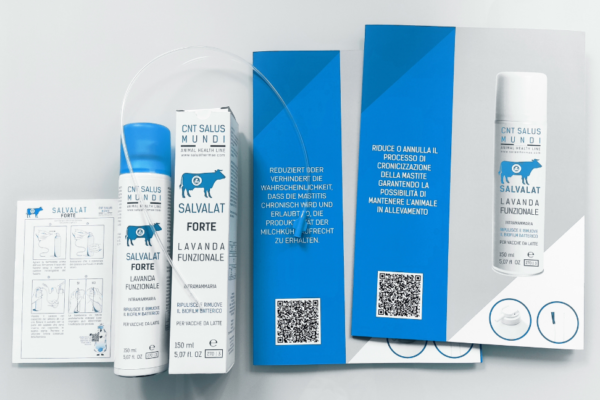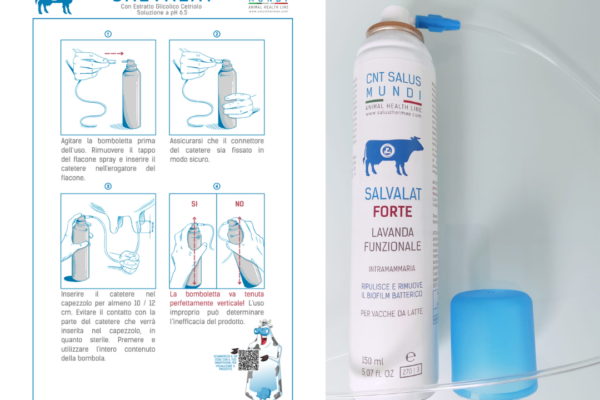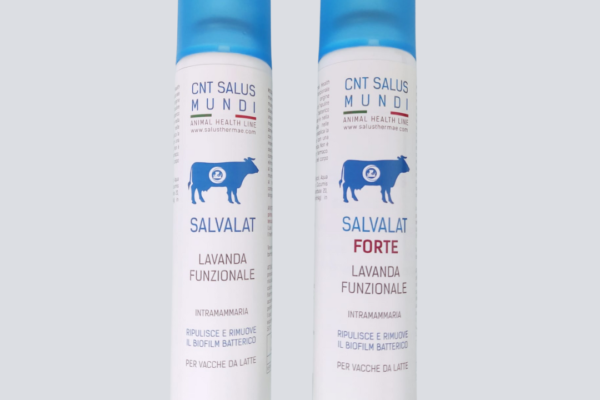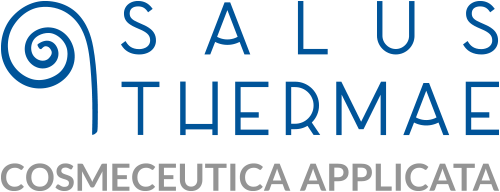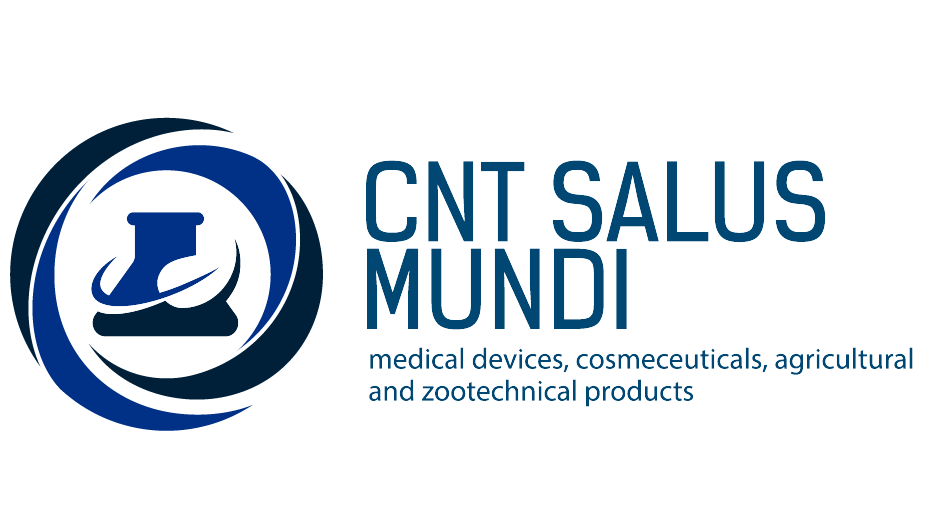Are you a company interested in our animal husbandry products?
Call us on +447864760458 or contact us directly via the website
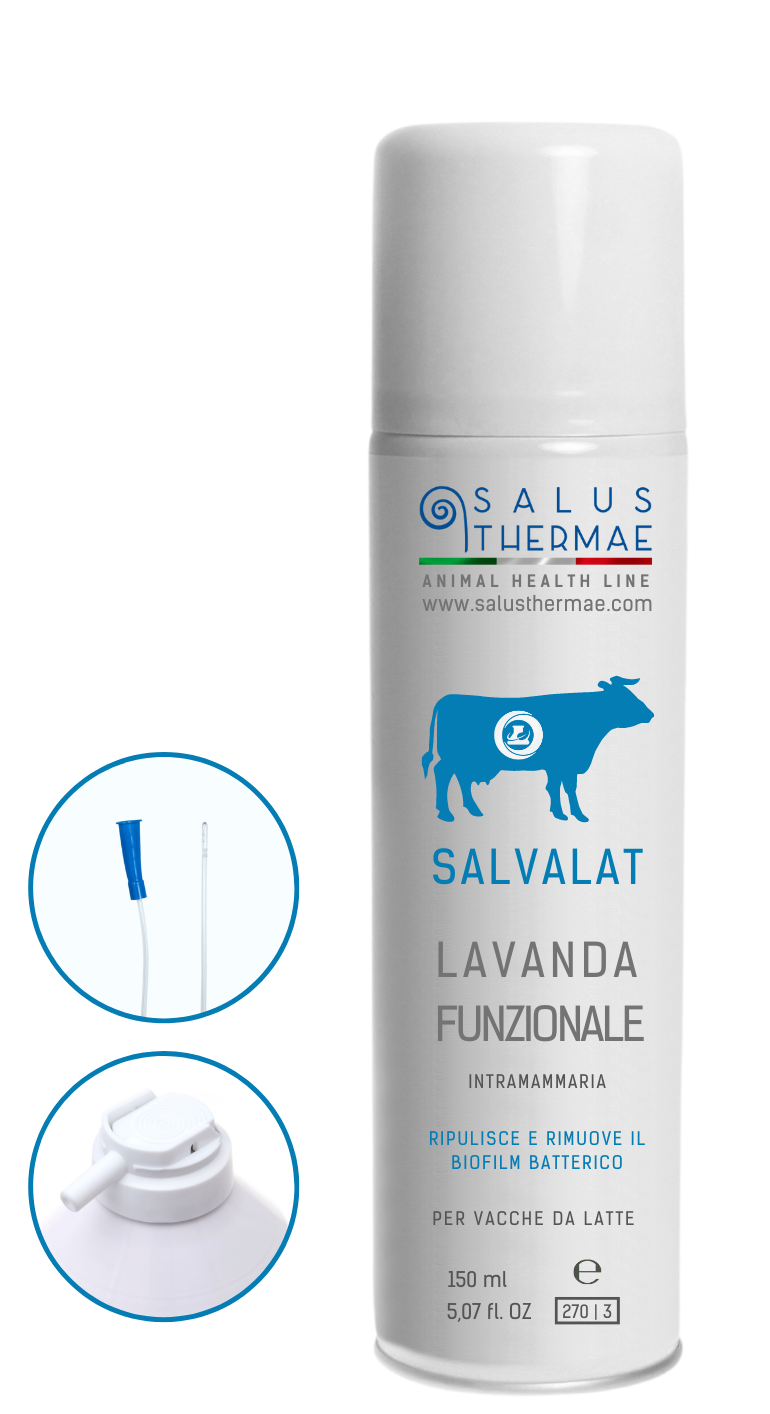
SALVALAT
A TECHNOLOGICAL AND INNOVATIVE SOLUTION TO BOVINE MASTITIS
Effective in high percentage of cases treated
Non-pharmaceutical
Low-cost treatment
WHEN TO USE THE PRODUCT
We recommend using SALVALAT in infections caused by pathogenic microorganisms to prevent chronification. It is advisable to use the product before any biofilm forms. NOTES: Reductions in pathogenic microbial populations have been recorded following the use of SALVALAT.

This project has received funding from the European Union’s Horizon 2020 research and innovation programme under grant agreement No 826673
The problem
One of the main diseases affecting dairy cows is mastitis. Treatment of this disease (which affects almost 40% of animals) requires antibiotic therapy and the need to dispose of the milk produced within 15 days of the end of treatment. The total cost to the farmer is around €440 per animal affected by mastitis, with frequent negative outcomes that can lead to the death of the animal.
Solution
MASTERCOW is an alternative method to antibiotics that involves flushing the milk ducts. MASTERCOW eliminates the infection within a few hours and is effective in 90% of cases. Traces of the product disappear within the next 24 hours with almost immediate resumption of milking. The cost of treatment is 30% of an antibiotic course.
The project
MASTERCOW has received funding from the European Commission under the SME Instrument Phase 1 programme to develop a feasibility study aimed at defining a technology roadmap and marketing plan to bring the product to European and international markets.
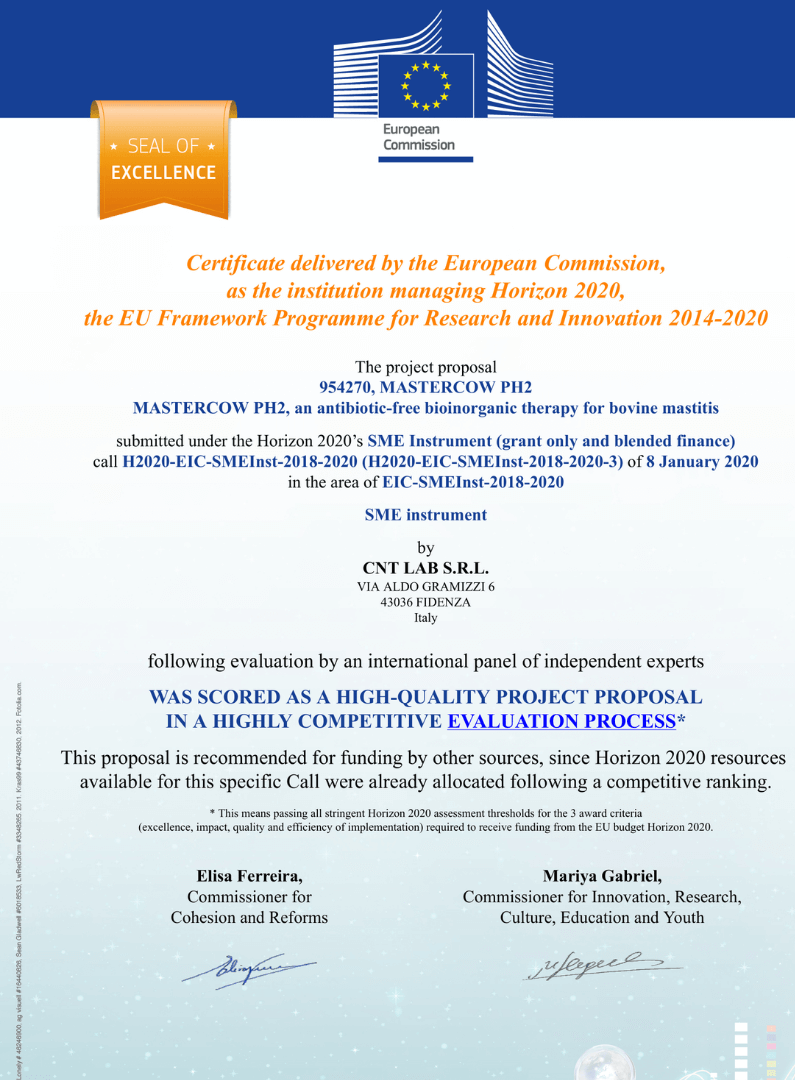
PRODUCT SALVALAT – THE RESULT OF THE MASTERCOW PROJECT
Salvalat FORTE has a higher content of vegetable glycerine to denature biological compounds, a higher content of propylene glycol with a moisturising function for biofilms, a higher content of Ag+ clusters to make the mixture more slippery and facilitate adhesion to biofilms.
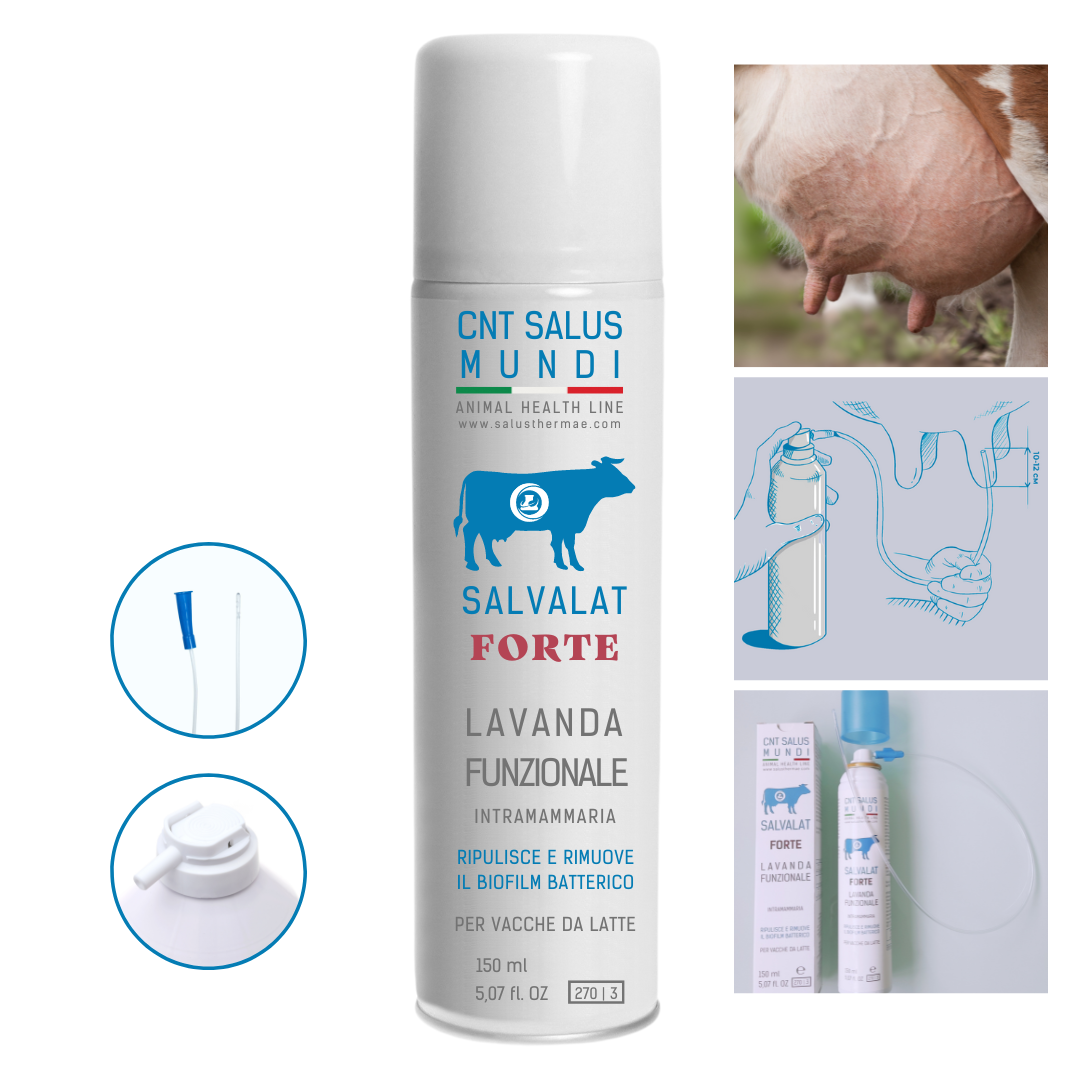
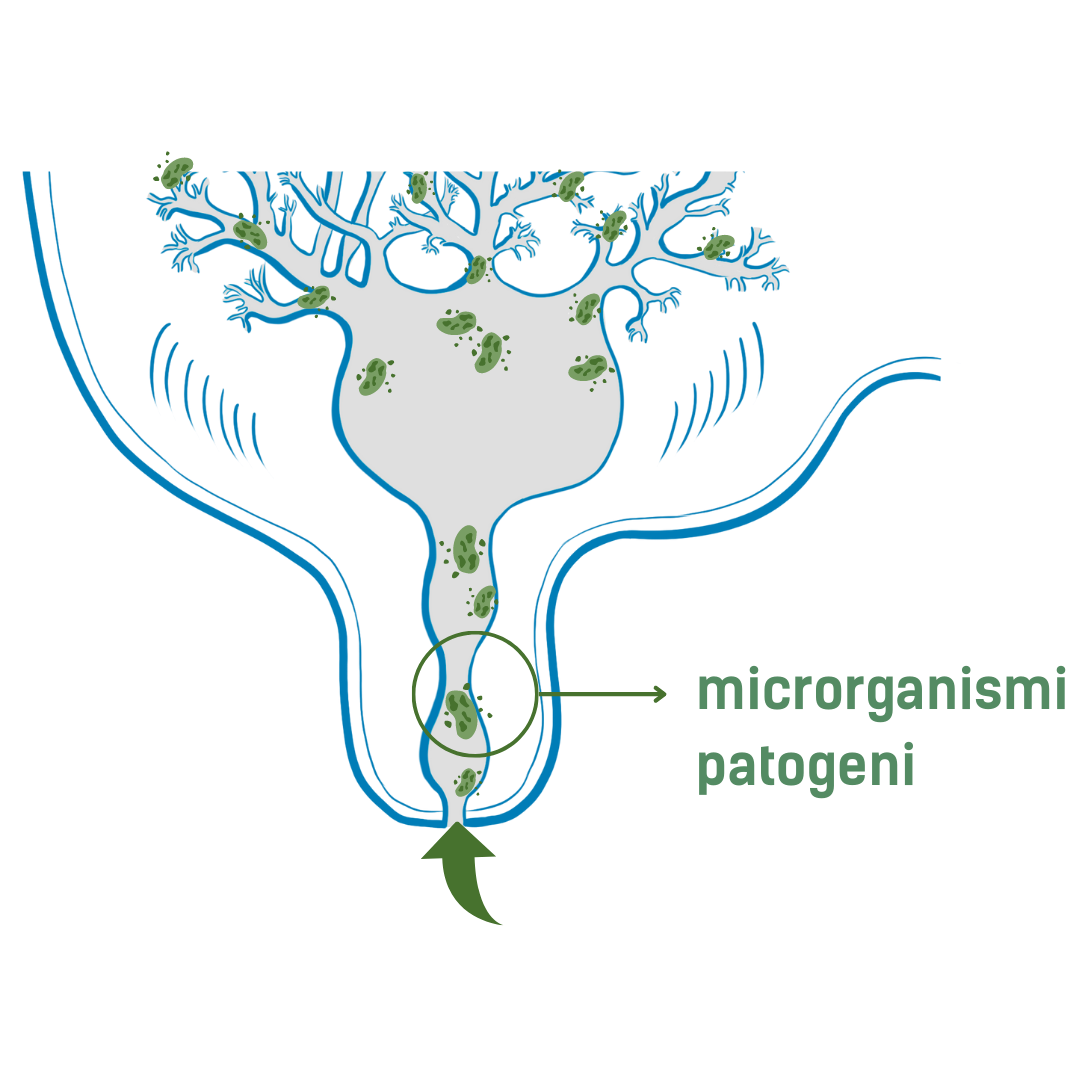
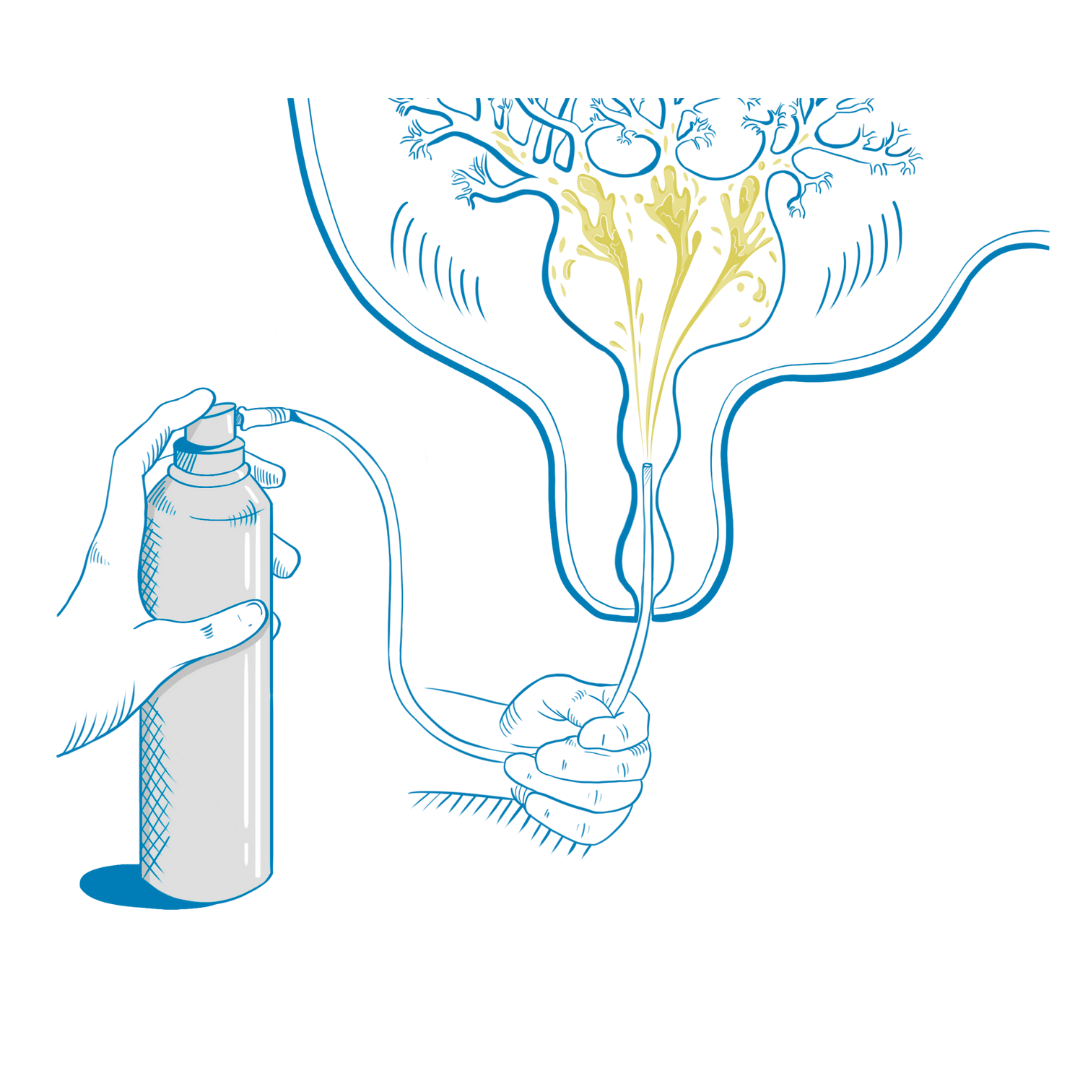
1). Pathogenic microorganisms penetrate the udder. Sometimes the animal’s immune response may be inadequate. If left untreated, over time a biofilm can grow inside the udder and it is really difficult to remove. This is why treatment with our innovative bioinorganic lavage is highly recommended.
3). After inserting the catheter, press and hold down the nozzle until the can is empty. This injects the lavage into the teat cistern so that it reaches the milk ducts. The results is a dual action: breakdown of the biofilm and consequent flushing out of disease-causing pathogens.
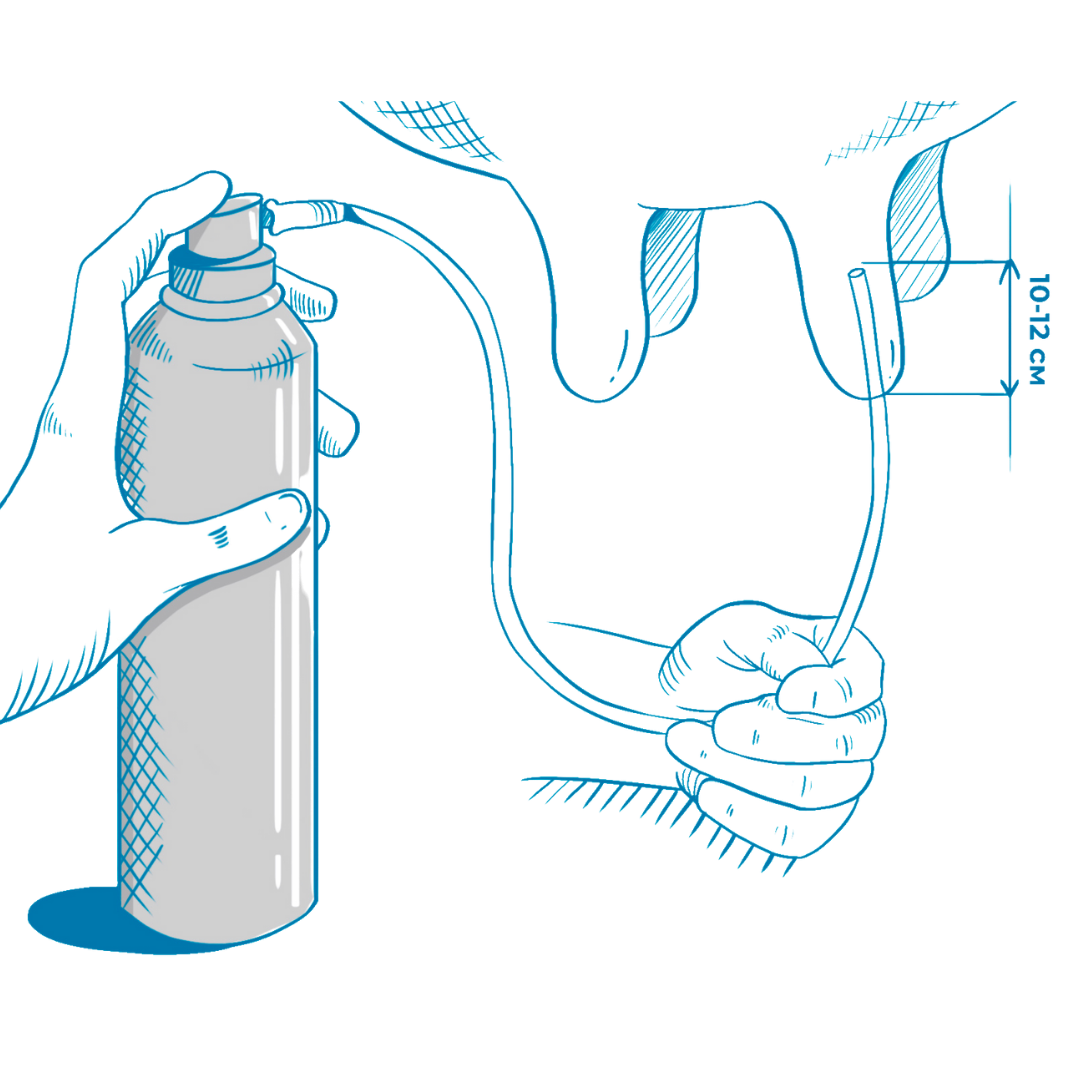
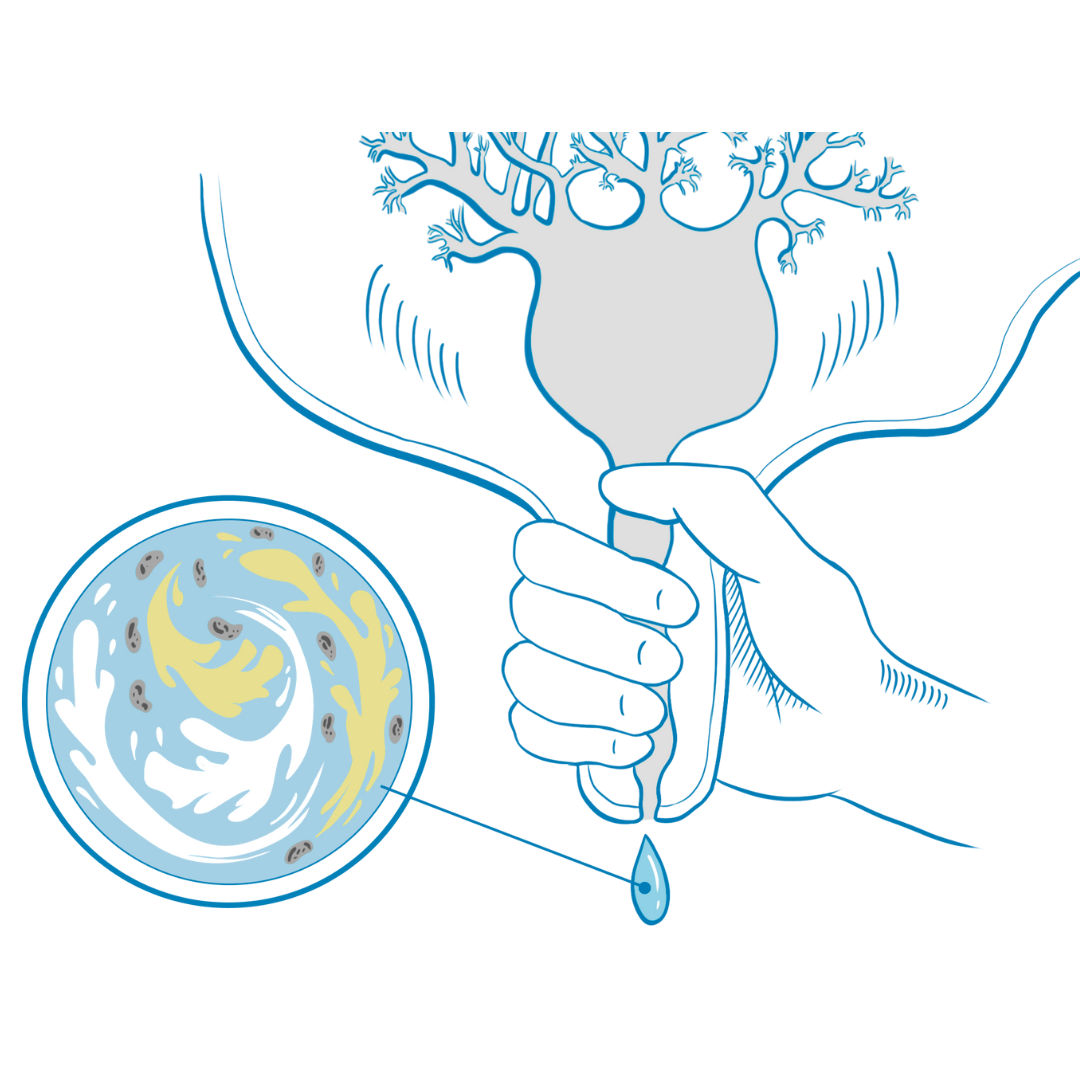
2). Our revolutionary SALVALAT system consists of a spray can containing the functional lavage, with a nozzle and catheter with 3 holes in the end section. The catheter must be inserted into the teat by 10-12 cm. Avoid touching the section to be inserted as it is sterile.
4). At the end of this process, wait 12/24 hours during which the lavage mixes with newly produced milk thus reaching all accessible areas of the gland cistern. The first milk after treatment is “dirty”, containing dead cells, pathogenic microorganisms and lavage residues.
Milk from the first milking after using SALVALAT is not consumable.
| 2010 | First tests carried out on animals using systems not yet engineered. | The product injected into the udder via the teat has very positive results. |
| 2013-2014 | CNT Lab opens a laboratory in Italy. | Over 300 formulations studied and tested. |
| 2015 | Start of the “Mastercow” project and an operating agreement is signed with Genesi Project, under the supervision of veterinarian, Dr. Corrado Caroli. | The agreement involves creating a spray can to send the product into the teat more easily. |
| 2017 | Preparation of formulations with SynthAg colloidal silver, glycolic iodine and citric acid. Numerous laboratory tests (MICRO-B) show 100% efficacious activity both at 10ppm and at 5ppm of Ag (SynthAg) with exposure times of 2h on microbic populations of up to 10^6. | E. Coli; S. Aureus; E. fecalis; C. albicans are used in exposure time studies. First tests with Genesi Project begin in order to look for any residues in the milk. |
| 2018 - 2019 | Mastercow project presented to the EU for Horizon2020 co-financing. Mastercow receives the first green light from the EU and its first Seal of Excellence from the EU. | The product is not mixed with gas in the spray can. |
| 2020 | The Mastercow project is awarded its second Seal of Excellence. | Tests are halted due to the Covid-19 pandemic. |
| 2021 | Beginning of operational relations with veterinarian, Dr. Marzio Schianchi, who is entrusted with samples of the Mastercow project and carries out tests for technical and commercial purposes. | The nervous reaction witnessed in some animals during product application turns out to be caused by the slightly acidic pH which is then corrected. |
| January and February 2022 | The Mastercow Project changes its name to “Salvalat”. The definitive method of Salvalt application is via a 3-hole catheter and the use of a spray can specially designed with Everton. The 200-ml aluminum can contains 150 ml of intramammary lavage and 50ml of inert nitrous oxide as a propellant. | The effectiveness of the product is confirmed by a recovery statistic close to 80%. Of the three projects conceived in 2018, two are taken to completion: “Salvalat” and “Salvalat Forte”. |
| May 2022 | Beginning of operational relations with veterinarian, Dr. Marzio Schianchi, who is entrusted with samples of the Mastercow project and carries out tests for technical and commercial purposes. | Agreements are made with Everton for industrial production. |
| December 2022 | The first industrial production of the product is placed on the market. | Both Salvalat and Salvalat Forte are delivered to the distributor. |
Synoptic table of the 2012/2022 tests
| PERIOD | PRODUCT USED FOR TEST | N°of clinical mastitis cases | N° of sub-clinical mastitis cases | Physiological recuperation* | % Physiological recuperation | Complete recovery | % Complete recovery | Total complete recovery- + physiological recuperation* |
| 2012 | SPRAY BY MACHINE | 108 | 0 | 55 | 51% | 35 | 32% | 83% |
| 2015 | SPRAY GAS - CITRU | 20 | 20 | 12 | 30% | 6 | 15% | 45% |
| 2015 | SPRAY GAS MASTERCOW | 22 | 40 | 18 | 29% | 14 | 23% | 52% |
| 2016 | SPRAY GAS - PEG | 13 | 10 | 1 | 4% | 8 | 35% | 39% |
| 2018 | SPRAY BAG ON VALVE - MC QR | 20 | 7 | 10 | 37% | 5 | 19% | 56% |
| 2018 | SPRAY BAG ON VALVE - MC QR 3 | 40 | 11 | 22 | 43% | 11 | 22% | 65% |
| 2018 | SPRAY BAG ON VALVE - MC CITRUS | 8 | 8 | 7 | 44% | 0 | 0% | 44% |
| 2020 | SPRAY WITH NITROGEN * - IODOSKIN | 10 | 6 | 6 | 38% | 3 | 19% | 56% |
| 2021 | SPRAY WITH NITROGEN * - CUCUMBER 400 | 8 | 11 | 5 | 26% | 7 | 37% | 63% |
| 2021 | SPRAY WITH NITROGEN * - CUCUMBER 200 | 8 | 20 | 5 | 18% | 16 | 57% | 75% |
| 2022 | SPRAY WITH NITROGEN - CUCUMBER 150 | 14 | 15 | 6 | 21% | 18 | 62% | 83% |
|---|
* Return to physiological conditions close to 200,000 cells, well below the legal limits.
SALVALAT PROTOCOL
For which animals is it suitable?
The Salvalat protocol is recommended for all animals with a cell count exceeding 200,000 (indications for specific pathogenic microorganisms are provided below).
Subclinical mastitis (most commonly associated with: Staphylococcus Aureus (Staph. Aureus)).
a) The milk looks normal and there are no visible signs of inflammation of the udder.
b) Diagnosis can only be established based on a high concentration of somatic cells in the milk established by counting or bacteriological analysis.
For which animals is it NOT suitable?
The Salvalat protocol is not suitable for animals with the following types of mastitis (classified according to their clinical form):
Clinical mastitis.
a) Depending on the type of pathogen involved, fever and a deterioration in the overall condition of the cow may or may not be associated with visible signs of inflammation of the udder (redness, heat, swelling, pain). The milk is visibly different in appearance (chemical, physical and usually bacteriological changes): simple clots in the milk or clumps of fibrin in milk that is very watery may be noted.
Acute mastitis (most commonly associated with: Escherichia Coli, Streptococcus Uberis, Streptococcus Dysgalactiae).
b) The clinical signs (fever, lethargy, loss of appetite) are severe and the udder is swollen, painful, oedematous or very hard.
c) Secretions from the affected quarter sometimes contain clots or flakes and may be watery, serous or purulent.
Acute gangrenous mastitis (most commonly associated with: Staphylococcus Aureus (S. Aureus), Clostridium Perfringens).
d) Anorexia, dehydration, lethargy, fever and signs of toxaemia, sometimes resulting in the death of the animal.
e) At the onset of the disease, the udder is red, swollen and hot. Within a few hours the teat goes cold and the secretions contain water and blood, leading to necrosis.
Chronic or recurrent mastitis (most commonly associated with: Staphylococcus Aureus ( S. Aureus ), Streptococcus Uberis).
f) Episodic occurrence of the clinical signs of mastitis (associated with the absence of clinical signs for long periods).
g) Secretions regularly contain clots, flakes or clumps of fibrin.
When to use the product
Pathogens that penetrate the udder can evade the animal’s immune defences causing sub-clinical mastitis which can become chronic and, over time, permanently compromise the animal’s health.
The application of Salvalat, when performed early enough, can prevent chronicization by acting on the majority of pathogenic microorganisms; for the most frequent, see the indications below and the relative dosage table (opposite page); for others, follow your veterinarian’s instructions.
It is advisable to use Salvalat within 3 days of the last functional check.
Use when Staphylococcus Uberis is detected:
- with a cell count of between 300,000 and 400,000 at the first check;
- when 2 consecutive checks test positive;
- immediately with a cell count exceeding 800,000.
Use when Staphylococcus Aureus is detected:
- immediately after the first positive test with a cell count exceeding 200,000 cells.
Use when Prototheca is detected:
- immediately after the first positive test with a cell count exceeding 200,000 cells.
How to apply Salvalat
Perform the CMT (California Mastitis Test) on the cow to identify which of the four quarters may be infected.
Carry out milking and then apply the product, taking care to carefully disinfect the tip of the teat using sterile paper/cotton and alcohol.
Push the catheter into the teat of the infected quarter by 10-12 cm. Being as it is sterile, avoid touching the catheter that enters the teat with your hands.
Once the catheter is in place and connected to the spray can, press and hold down the nozzle until the can is empty.
The milk from milking following application of the product must be thrown away.
In the first 24/48 hours following the use of Salvalat, the milk may be serous or contain “strands” making it unsuitable for consumption as food or for processing. Whether or not to use this milk is at the dairy farmer’s discretion. The product can cause a light swelling of the affected quarter; if this is the case, no further intervention is required and the quarter will return to normal size within 48 hours. In exceptional cases, when swelling may be more pronounced, consult your veterinarian.
Results recorded in the field
Following the use of Salvalat, there may be increases in cell count in the first check. The product shows its effectiveness in subsequent checks:
- maximum effectiveness occurs in about 60 days;
INDICATIONS FOR A POSSIBLE DRY PERIOD:
After the last check, before the cow goes into a dry period, do a CMT and refer to the dosage table.
- at the end of each use, recovery is recorded in over 70% of cases.
EFFECTIVENESS ON THE MAIN PATHOGENS*
*(Effectiveness refers to the removal of biofilm containing pathogens that will be eliminated during milking).
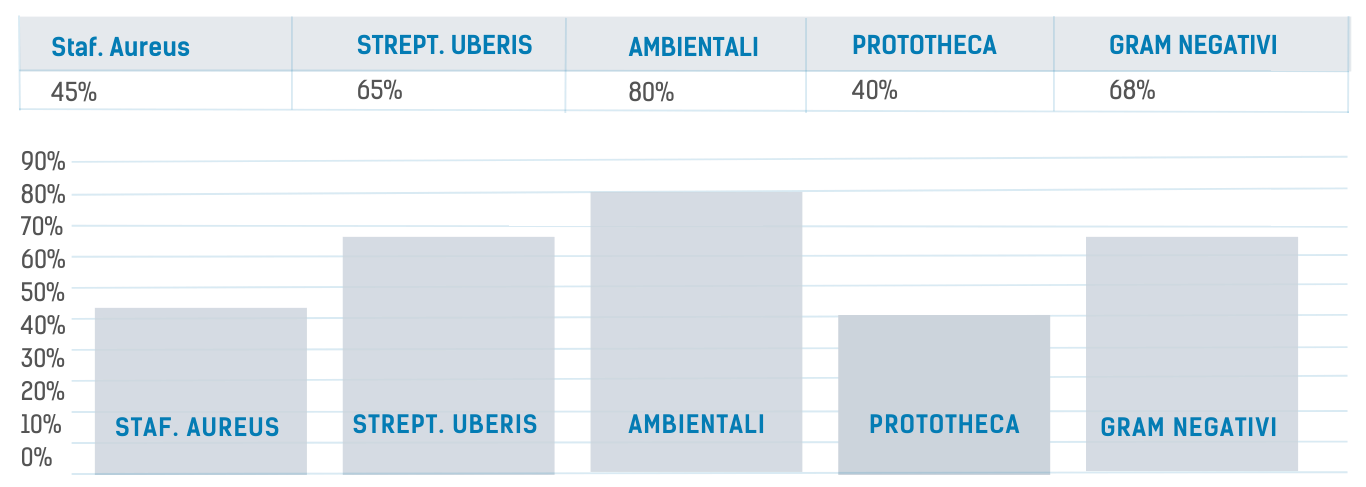
SALVALAT POSOLOGY
| 1st initial cell count | First use within 3 days | Second use (7 days after the first) |
|---|---|---|
| CELLS up to 800 | Use Salvalat | |
| CELLS from 801 tо 1800 | Use Salvalat | Repeat CMT. If positive, reuse Salvalat |
| CELLS over 1800 | Use Salvalat Forte | Use Salvalat |

